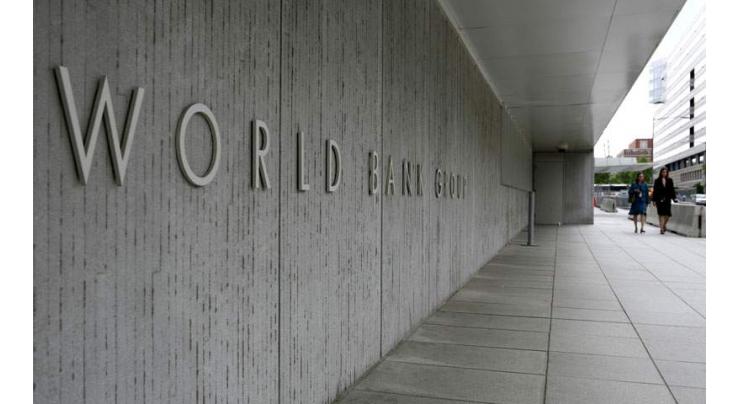
World Bank Praises Pakistan Continuing Progress In Restoring Macroeconomic Stability
Mohammad Ali (@ChaudhryMAli88) Published November 11, 2016 | 08:50 AM

WASHINGTON, (APP - UrduPoint / Pakistan Point News - 11th Nov, 2016 ) : A new World Bank report has praised Pakistan continuing progress in restoring macroeconomic stability, saying it was ready to support the government's reforms agenda to help spread its benefits more widely.
"After achieving macroeconomic stability, the government continued to deliver on its structural reform agenda in FY16, but much remains to be done if growth is to be strengthened and sustained," the report said.
The "Pakistan Development Update" report which is released twice a year, noted 4.7 economic growth in 2015-16 financial year, being the highest in eight years and projected the growth to accelerate to 5.4 percent in FY18, according to a statement issued here.
In the medium-term, Pakistan's growth is expected to continue to accelerate, reaching 5 percent in FY17. "Pakistan continues to make good progress in restoring macroeconomic stability. Building on this Pakistan needs to push forward with deeper structural reforms that spread benefits more widely, and the World Bank stands ready to support the reforms agenda," says Illango Patchamuthu, World Bank Country Director for Pakistan.
Pakistan's growth was driven by domestic consumption that continues to compensate for weak global demand. The report warned that Pakistan's low rates of investment and declining export competitiveness, however, remain a concern.
The report said that growth acceleration will depend on the implementation of structural reforms, such as energy and taxation and implementation of the China Pakistan Economic Corridor (CPEC). In the long term, growth will be driven by increased investment in both physical and human capital, with increased focus on better nutrition, health and education outcomes.
"Pakistan has made significant progress in reducing poverty over the last decade. Based on the revised poverty line adopted in early 2016, the percentage of people living below the poverty line decreased from 64.
3 percent in FY02 to 29.5 percent in FY14," the report said.
"This reduction in poverty is corroborated when analyzing other data, such as asset ownership", says Muhammad Waheed, Senior Economist and lead author of the report. Projected even higher growth in FY18, the report also expects a moderate increase in investment (related to CPEC projects) will to contribute to an acceleration of growth, which will continue to be driven by public and private consumption.
Pakistan's growth in FY16 was driven by strong domestic demand. Consumption accounted for an overwhelming 92 percent of GDP in FY16, and contributed 7 percentage points towards GDP growth, supported by sustained growth in remittances.
Strong aggregate demand and improving business sentiments were evident in private sector credit growth of 12 percent, expanding by Rs. 461 billion in FY16 compared with Rs. 224 billion in FY15, the report said.
Low inflation and low interest rates also contributed to higher credit growth. "The government's efforts to stabilize the macroeconomic environment provided a better footing for economic activity, while marginal improvements in energy supplies facilitated manufacturing growth in particular," the report added.
The World Bank's 2017 Doing Business report found that Pakistan improved four ranks in 2017, placing it among the top ten "most improved" countries. Revenue growth is underpinning the falling deficit, driven in FY16 by a 20 percent increase in the Federal board of Revenue's (FBR) collection.
A series of new tax measures in the FY17 budget will broaden the tax base and are expected to contribute to another significant increase in FBR revenues. On the expenditure side, the development budget has grown faster than the recurrent budget.
In the FY17 budget, an expected reduction in state-owned enterprise subsidies and interest payments has created space for an increase in infrastructure spending, including on CPEC projects.
Related Topics
Recent Stories

HEC reviews curricula for environmental sciences degree programme

ICC Asia looking forward to an action-packed Asia Cricket Week

Yuvraj Singh named ICC Men’s T20 World Cup 2024 Ambassador

Greece hands Olympic flame to 2024 Paris Games hosts

Two Kyiv hospitals evacuating over feared Russian strikes

World must act on neurotech revolution, say experts

Charles & Catherine's cancer diagnoses

Champions Alcaraz and Sabalenka through in Madrid Open

King Charles to resume some public duties during cancer treatment: palace

US defense chief announces $6 bn in security aid for Ukraine

Heavy rains cause damage to Spezand-Taftan railway track

Woman stabbed in Israel, attacker killed: police
More Stories From World
-
NFL will allow players to wear Guardian Cap helmets in games
2 hours ago -
Football: German Bundesliga table
2 hours ago -
Football: Italian Serie A result
2 hours ago -
Football: German Bundesliga results
2 hours ago -
US troops to leave Chad in second African state withdrawal
2 hours ago -
Plastics pollution may be solved without production cap: Canada minister
2 hours ago
-
Biden stalls on menthol cigarette ban fearing Black vote backlash
2 hours ago -
Champions Alcaraz and Sabalenka through in Madrid Open
2 hours ago -
6,000 French police to welcome Olympic torch amid bonus boost
3 hours ago -
Taiwan hit by several quakes, strongest reaching 6.1-magnitude
3 hours ago -
'Ballistic' Bairstow stars as Punjab pull off record T20 chase
3 hours ago -
Tennis: ATP/WTA Madrid Open results - 2nd update
3 hours ago